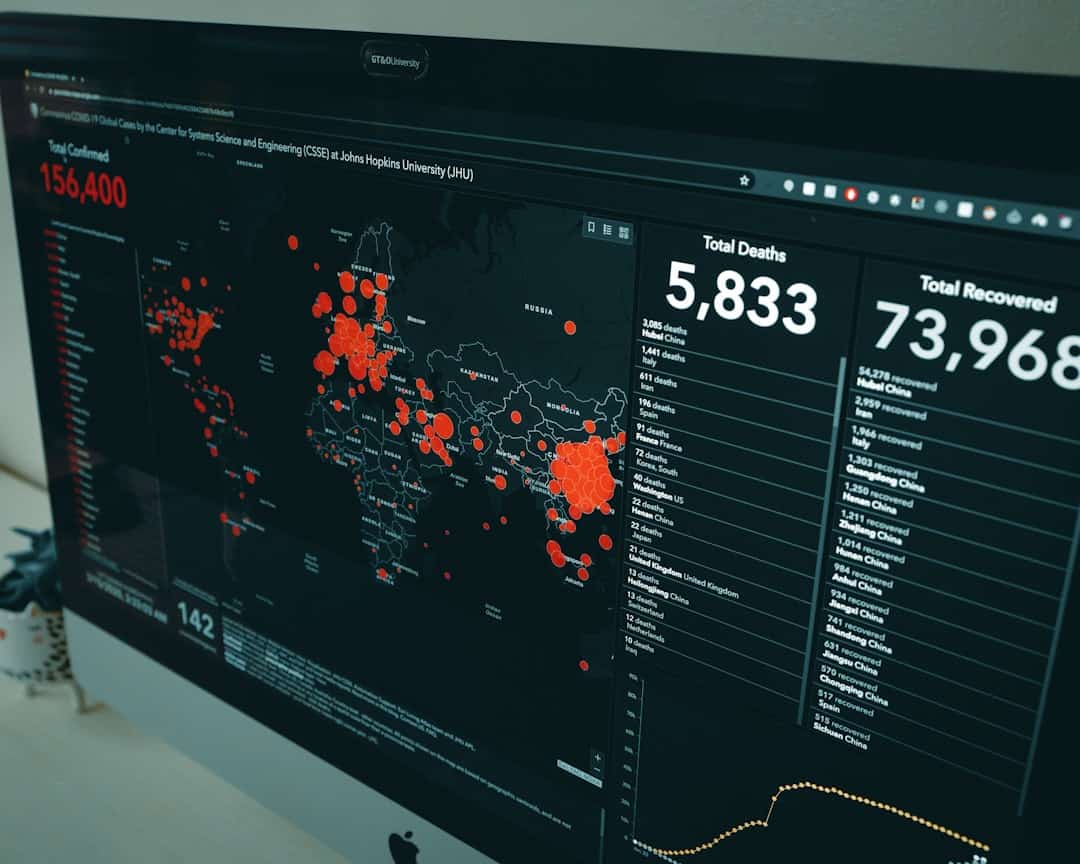In the rapidly evolving landscape of artificial intelligence, Microsoft Azure Computer Vision stands out as a powerful tool that enables developers and businesses to harness the potential of image processing and analysis. Launched as part of Microsoft’s Azure cloud services, this platform offers a suite of capabilities that allow users to extract meaningful information from images and videos. With the increasing reliance on visual data in various industries, Azure Computer Vision provides a robust solution for tasks ranging from object detection to facial recognition, making it an essential resource for computer enthusiasts and professionals alike.
The significance of Azure Computer Vision lies not only in its advanced algorithms but also in its accessibility. By leveraging cloud computing, Microsoft has democratized access to sophisticated AI tools, allowing developers of all skill levels to integrate computer vision capabilities into their applications. Whether you are building a mobile app that recognizes landmarks or a security system that identifies individuals, Azure Computer Vision offers the tools necessary to bring your ideas to life.
As we delve deeper into its features and capabilities, it becomes clear that this platform is not just a technological marvel but also a gateway to innovation across various sectors.
Key Takeaways
- Microsoft Azure Computer Vision is a powerful tool for analyzing and extracting information from images and videos.
- Features and capabilities of Microsoft Azure Computer Vision include image recognition, optical character recognition, facial recognition, and more.
- Getting started with Microsoft Azure Computer Vision is easy with the comprehensive documentation and user-friendly interface.
- Integrating Microsoft Azure Computer Vision into your applications can enhance their functionality and provide valuable insights.
- Best practices for utilizing Microsoft Azure Computer Vision include optimizing image quality, understanding the limitations of the technology, and ensuring data privacy and security.
Understanding the Features and Capabilities of Microsoft Azure Computer Vision
At the heart of Microsoft Azure Computer Vision is a comprehensive set of features designed to analyze and interpret visual content. One of the standout capabilities is image analysis, which allows users to extract information such as tags, descriptions, and even color schemes from images. This feature is particularly useful for businesses looking to automate content moderation or enhance user experience by providing relevant recommendations based on visual data.
The ability to generate detAIled insights from images can significantly streamline workflows and improve decision-making processes. Another remarkable feature is optical character recognition (OCR), which enables the extraction of text from images. This capability is invaluable for applications that require digitizing printed documents or extracting information from images of signs and labels.
By converting visual text into machine-readable formats, OCR opens up new avenues for data processing and analysis. Additionally, Azure Computer Vision supports facial recognition, allowing developers to build applications that can identify and verify individuals based on their facial features. This functionality has far-reaching implications in security, marketing, and personalized user experiences.
How to Get Started with Microsoft Azure Computer Vision

Getting started with Microsoft Azure Computer Vision is a straightforward process that begins with creating an Azure account. Once you have access to the Azure portal, you can easily set up a Computer Vision resource. This involves selecting the appropriate pricing tier based on your usage needs and configuring the necessary settings.
Microsoft provides extensive documentation and tutorials to guide users through the setup process, ensuring that even those new to cloud services can navigate the platform with ease. After setting up your resource, the next step is to familiarize yourself with the API endpoints and SDKs available for various programming languages. Microsoft offers SDKs for popular languages such as Python, C#, and JavaScript, making it easy to integrate Computer Vision capabilities into your existing projects.
The API documentation provides detailed information on how to make requests, handle responses, and implement various features such as image analysis and OCR. By following these guidelines, developers can quickly start experimenting with the capabilities of Azure Computer Vision and begin building innovative applications.
Integrating Microsoft Azure Computer Vision into Your Applications
| Metrics | Data |
|---|---|
| Accuracy | Percentage of correct predictions made by the Azure Computer Vision API |
| Latency | Time taken for the API to process an image and return results |
| API Usage | Number of API calls made to the Azure Computer Vision service |
| Cost | Financial expenses associated with using the Azure Computer Vision API |
Integrating Microsoft Azure Computer Vision into your applications opens up a world of possibilities for enhancing user experiences and automating processes. The API allows developers to send images or video streams for analysis, receiving detailed insights in return. For instance, if you are developing an e-commerce platform, you can use image analysis to automatically tag products based on their visual attributes, making it easier for customers to find what they are looking for.
Moreover, the integration process is designed to be seamless. By utilizing RESTful APIs, developers can easily incorporate computer vision functionalities into their applications without needing extensive knowledge of machine learning or image processing algorithms. This means that even small startups can leverage advanced AI capabilities without the need for a dedicated data science team.
As you build your application, consider how different features can work together; for example, combining OCR with image analysis can create powerful tools for document management systems or customer service chatbots.
Best Practices for Utilizing Microsoft Azure Computer Vision
To maximize the benefits of Microsoft Azure Computer Vision, it is essential to follow best practices that enhance performance and ensure effective use of resources. One key practice is optimizing image quality before sending it for analysis.
Additionally, consider pre-processing images by cropping or resizing them to focus on relevant areas, which can improve accuracy and reduce processing time. Another important aspect is managing API usage effectively. Azure Computer Vision operates on a pay-as-you-go model, so monitoring your usage can help control costs.
Implementing caching strategies for frequently analyzed images can reduce redundant API calls and improve response times. Furthermore, take advantage of Azure’s built-in analytics tools to track performance metrics and gain insights into how users interact with your application. This data can inform future enhancements and help you refine your approach to utilizing computer vision technologies.
Case Studies: Real-world Applications of Microsoft Azure Computer Vision

The versatility of Microsoft Azure Computer Vision is evident in its wide range of real-world applications across various industries. In retail, companies are using image analysis to enhance customer experiences by providing personalized recommendations based on visual preferences. For example, a fashion retailer might implement a feature that allows customers to upload images of clothing they like, which the system then analyzes to suggest similar items available in their inventory.
In healthcare, Azure Computer Vision is being utilized to streamline processes such as medical imaging analysis. Radiologists can leverage the platform’s capabilities to automatically detect anomalies in X-rays or MRIs, significantly reducing the time required for diagnosis while improving accuracy. These applications not only demonstrate the practical benefits of computer vision technology but also highlight its potential to transform industries by enhancing efficiency and decision-making.
Advanced Tips and Tricks for Maximizing the Potential of Microsoft Azure Computer Vision
For those looking to take their use of Microsoft Azure Computer Vision to the next level, there are several advanced tips and tricks worth considering. One effective strategy is to combine multiple features within a single application.
By analyzing both identity and emotional response, businesses can tailor their marketing strategies more effectively. Additionally, consider implementing machine learning models alongside Azure’s pre-built capabilities. While Azure Computer Vision provides robust out-of-the-box features, custom models trained on specific datasets can yield even more accurate results for niche applications.
Utilizing Azure Machine Learning in conjunction with Computer Vision allows developers to create tailored solutions that meet unique business needs while leveraging the scalability of cloud infrastructure.
The Future of Microsoft Azure Computer Vision: What to Expect
As we look ahead, the future of Microsoft Azure Computer Vision appears promising, with ongoing advancements in AI technology poised to enhance its capabilities further. One area of focus is the integration of more sophisticated deep learning models that can improve accuracy in object detection and image classification tasks. As these models evolve, we can expect even greater precision in analyzing complex visual data.
Moreover, as industries continue to embrace digital transformation, the demand for computer vision solutions will only grow. Microsoft is likely to expand its offerings by introducing new features that cater to emerging trends such as augmented reality (AR) and virtual reality (VR). These developments will enable developers to create immersive experiences that blend physical and digital worlds seamlessly.
In conclusion, Microsoft Azure Computer Vision represents a significant leap forward in making advanced image processing accessible to developers and businesses alike. With its rich set of features, ease of integration, and real-world applications across various sectors, it stands as a testament to the transformative power of AI technology. As we continue to explore its capabilities and anticipate future advancements, one thing is clear: the potential for innovation is boundless in this exciting field.
If you’re interested in exploring how technologies like Microsoft Azure Computer Vision are being integrated into new digital realms, you might find the article “Entering the Metaverse: Exploring Virtual Spaces” particularly enlightening. This piece delves into the utilization of advanced technologies, including image and object recognition, within virtual environments, offering a glimpse into how these tools are shaping the future of digital interaction and virtual tourism. You can read more about this fascinating topic by visiting Entering the Metaverse: Exploring Virtual Spaces.
FAQs
What is Microsoft Azure Computer Vision?
Microsoft Azure Computer Vision is a cloud-based service provided by Microsoft that enables developers to analyze and understand the content of images. It offers various features such as image recognition, object detection, facial recognition, text recognition, and image analysis.
What are the key features of Microsoft Azure Computer Vision?
The key features of Microsoft Azure Computer Vision include image recognition, object detection, facial recognition, text recognition, image analysis, optical character recognition (OCR), and the ability to generate image descriptions.
How does Microsoft Azure Computer Vision work?
Microsoft Azure Computer Vision uses advanced machine learning algorithms to analyze the content of images. It can identify and categorize objects within an image, recognize faces, extract text from images, and provide detailed analysis of image content.
What are the applications of Microsoft Azure Computer Vision?
Microsoft Azure Computer Vision can be used in various applications such as content moderation, image search, intelligent document processing, automated image tagging, accessibility features for visually impaired users, and personalized recommendations based on image content.
What programming languages and platforms are supported by Microsoft Azure Computer Vision?
Microsoft Azure Computer Vision provides SDKs and APIs for popular programming languages such as C#, Python, Java, and JavaScript. It also offers support for various platforms including Windows, Linux, iOS, and Android.
How does Microsoft Azure Computer Vision ensure data security and privacy?
Microsoft Azure Computer Vision adheres to strict data security and privacy standards. It provides features such as encryption at rest and in transit, role-based access control, compliance certifications, and data residency options to help customers meet their specific security and privacy requirements.











Leave a Reply